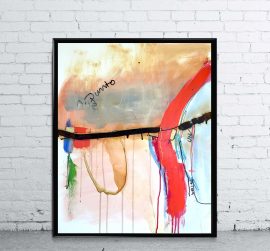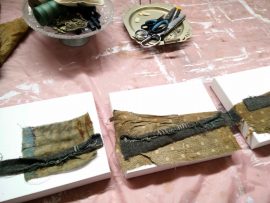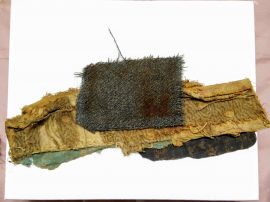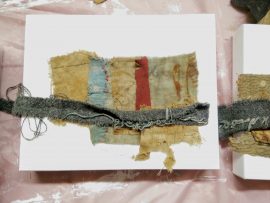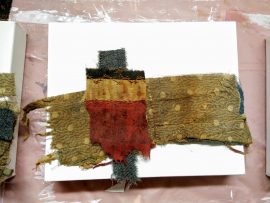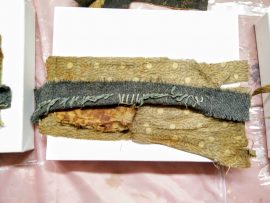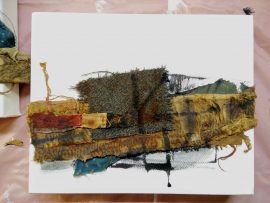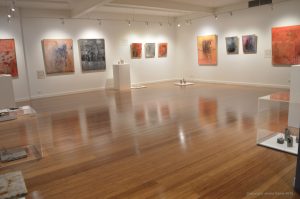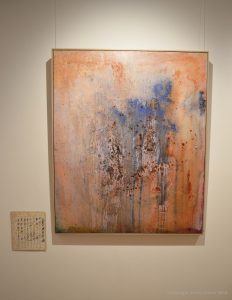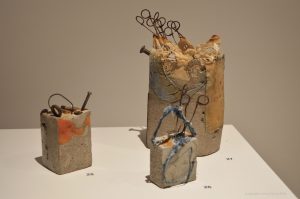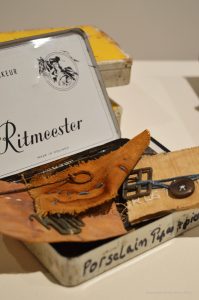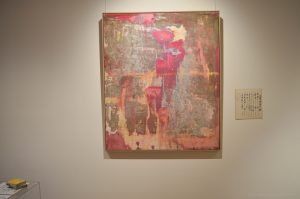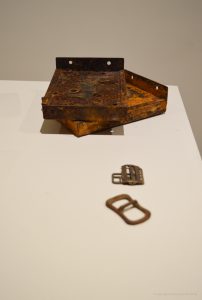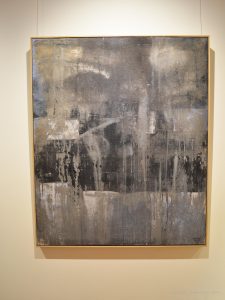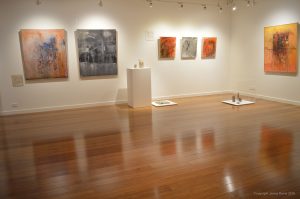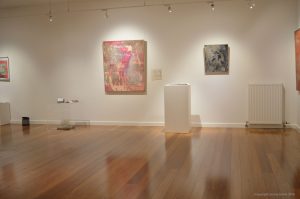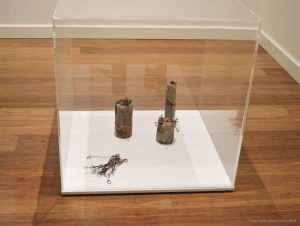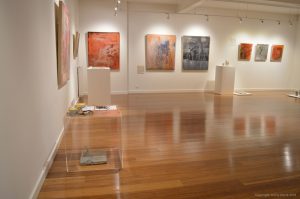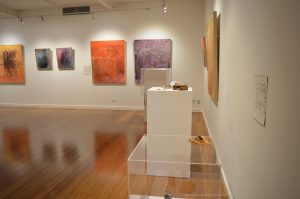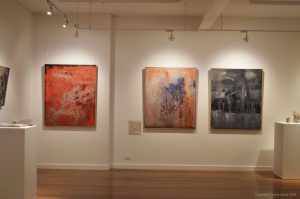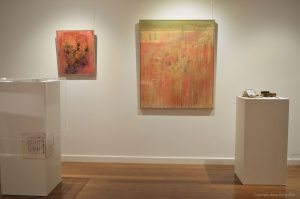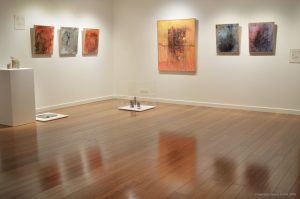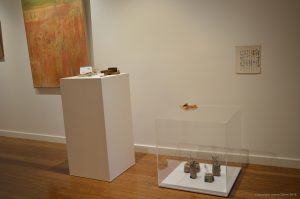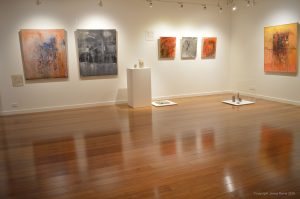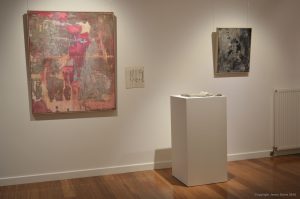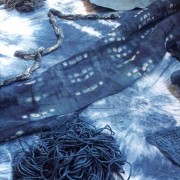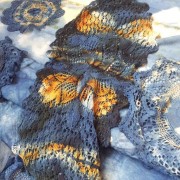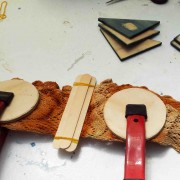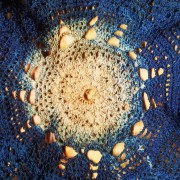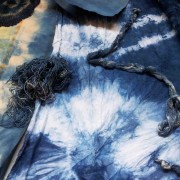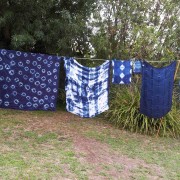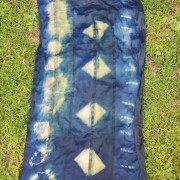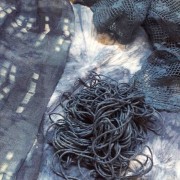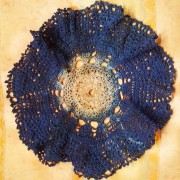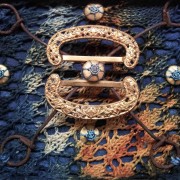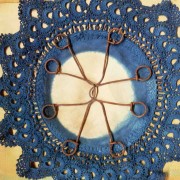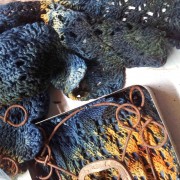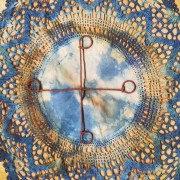Summer in Australia is the perfect time for eco and botanical dyeing outdoors. During Winter, I like to save little bits of fabrics, lace and papers in a box for Summer dyeing. This is how I rust dye my fabrics….
Many years ago, I collected heaps of metal junk to use for sculpture. As, I no longer weld, I now use the rusty bits and pieces that are scattered all over my property, for my dyeing projects.
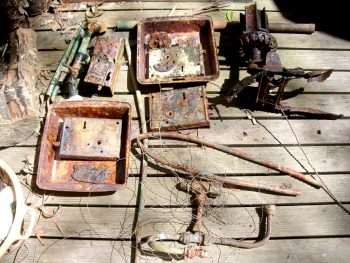
The gathering of the metal objects, wrapping them with the fabric spraying with vinegar and binding with rope and wire is quite relaxing. I call it mummy wrapping.
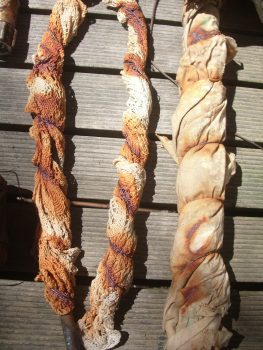
Rust Dyeing Fabric
MATERIALS:
Fabric: cottons silk… work best
Rusty metal objects: cooking pans, car parts, rusty nails, screws, pipes, copper objects
Wire, string, wool or rope just something to bind the fabric to the rusted item
Plain white vinegar
Rubber gloves
Plastic sheet or bags
METHOD
1. Gather all the items together wet your fabric and spray with vinegar.
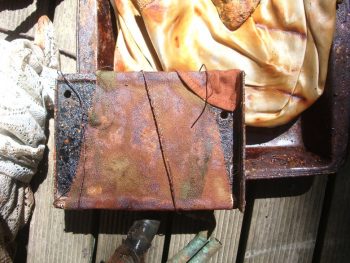
2. Wrap the fabric around and around the rusted object as best you can.
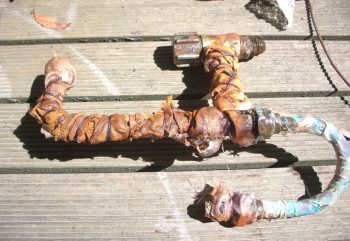
3. Make sure it’s tightly bound with the string rope or wire. Cover with plastic so it stays moist.
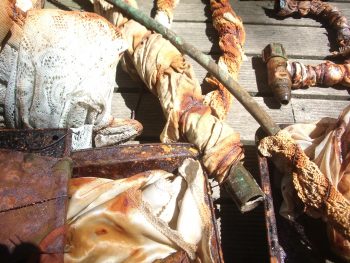
4. Leave and wait for the magic to happen.
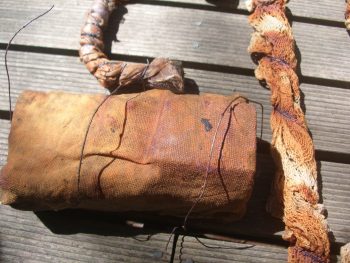
5. This may take an hour or 2 or if you want deeper textures of rust a week or 2. Then un- wrap your beautiful rusted fabric.
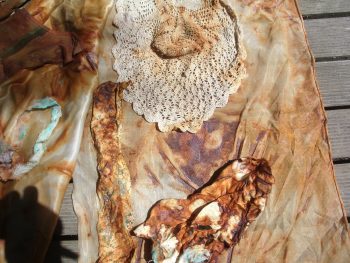
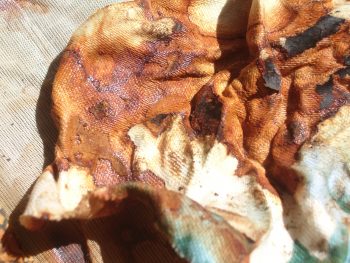
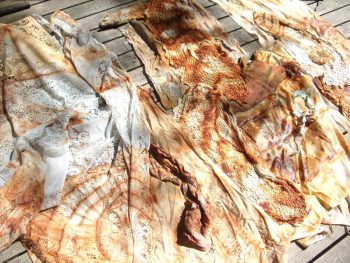
6. Once the fabric is dyed to the depth you want, soak for 30mins in warm water with a couple of tablespoons of salt to make the rust dye colourfast.
7. Wash gently in warm water with soap powder rinse dry and voila!
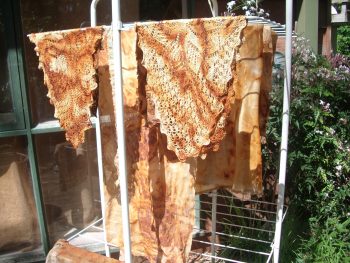
I also rust papers and larger pieces of fabric using a different method that I will share in a future post.
To see more of my free tutorials please go here



